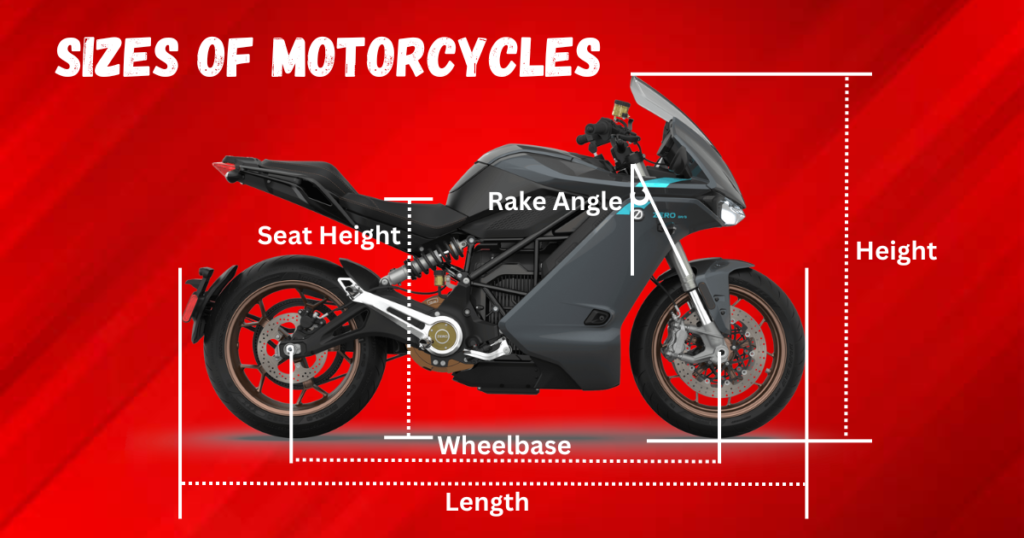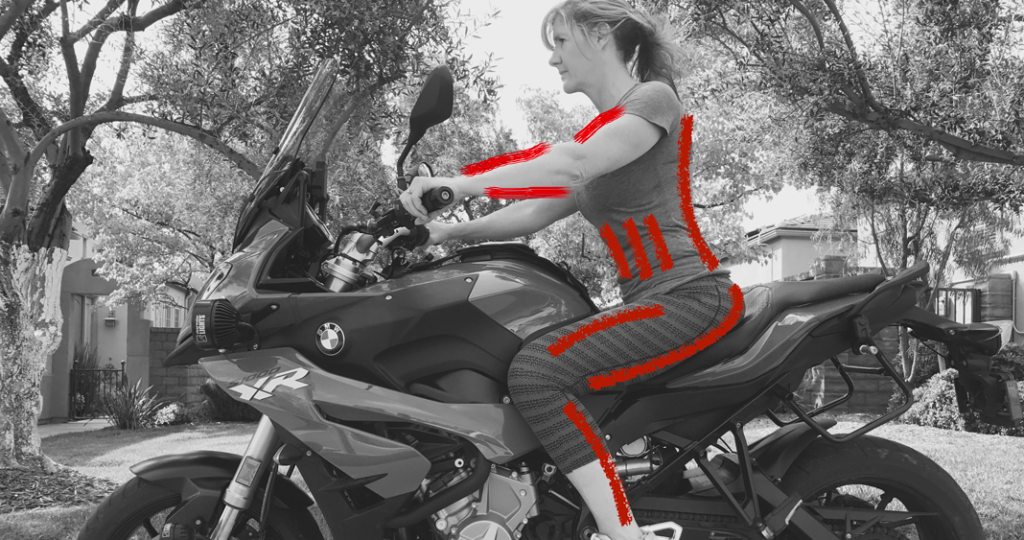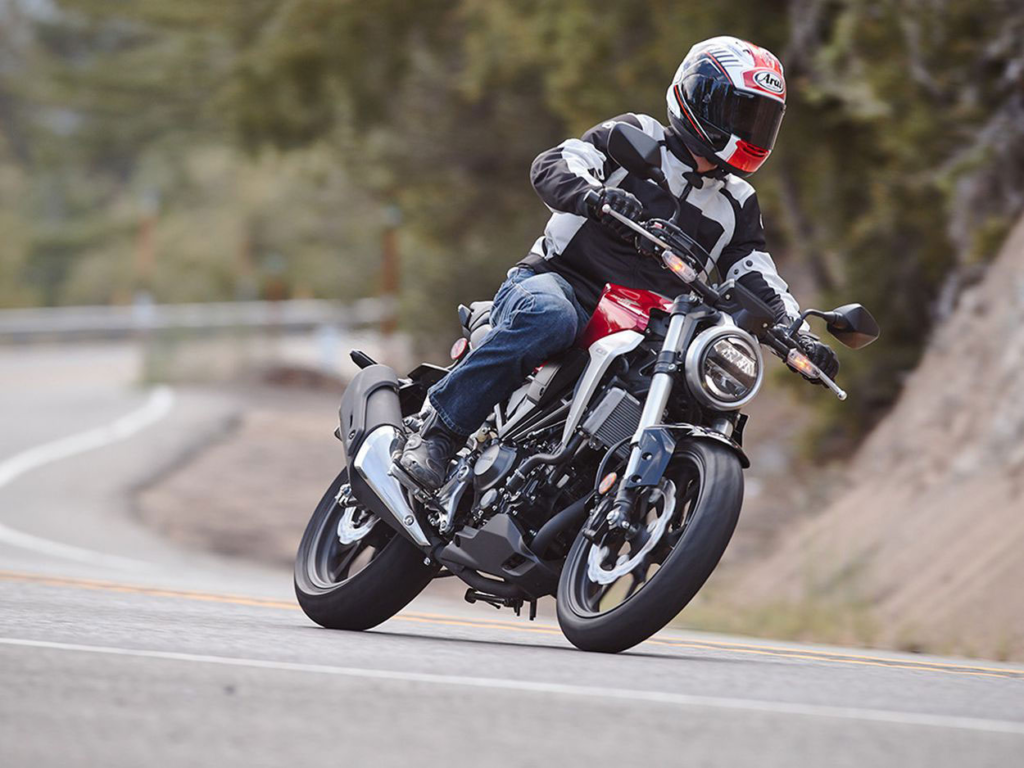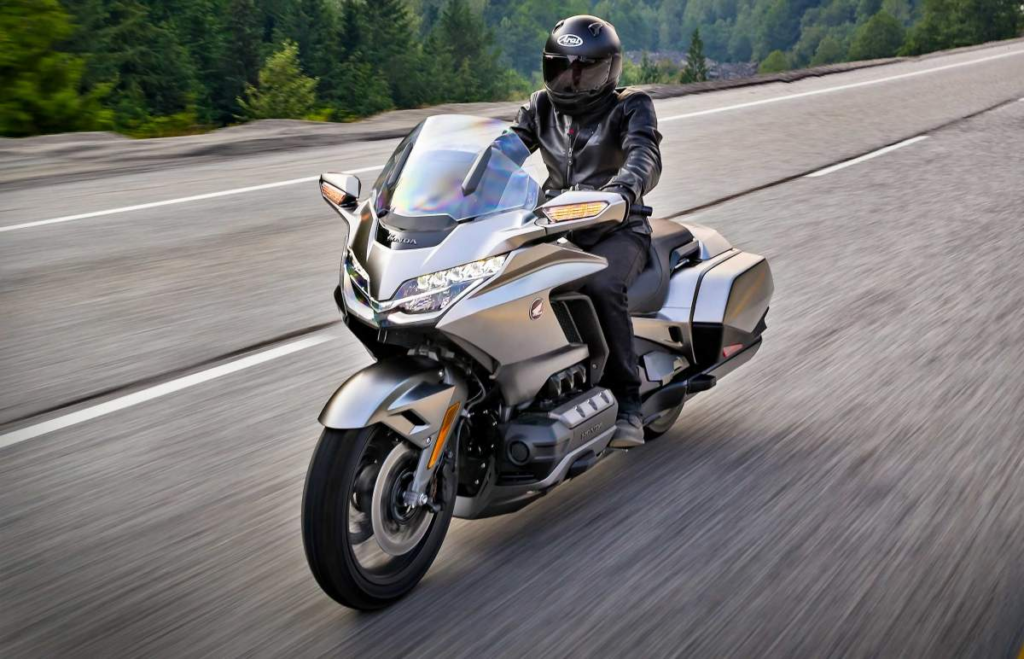
It’s crucial that the motorcyclist and the bike work together seamlessly. If your body and your bike don’t fit well together, it will be harder for you to control the bike and maintain your focus on the road.
There are many ways in which a size disparity can become a safety issue. The extra effort required to reach the controls could slow your reactions and make your handling less stable.
If the bike is too big or too heavy for you, it will also be harder to steer at low speeds. When you’re at a light or in stop-and-go traffic, you need to use your feet. In these situations, it’s easiest to just sell your bike if you can’t move it the way you need to.
Average Dimensions of a Motorcycle
What dimensions do motorcycles typically come in? Generally speaking, a motorcycle will be between the following width and height dimensions:
- Length: 75-100 inches
- Width: 25-40 inches
- Height: 40-60 inches
- Seat height: 25-40 inches
- Wheelbase: 50-70 inches
- Rake (fork angle): 23-37 degrees
Researching the wide world of motorcycles may turn up production bikes that don’t quite fit these categories and custom bikes whose dimensions may far exceed those of factory bikes.
Motorcycle Dimensions of Some Popular Models
| Model | cc | Length (in) | Width (in) | Height (in) | Seat height (in) | Wheelbase (in) |
| Yamaha MT125 | 125 | 77.2 | 31.5 | 41.9 | 31.9 | 53.3 |
| Harley-Davidson Street 750 | 750 | 87.2 | 33.1 | 43.5 | 25.7 | 60.4 |
| Suzuki GSX-R 750 | 950 | 79.9 | 28 | 44.7 | 31.9 | 54.7 |
| BMW F 800 GS | 800 | 90.6 | 37.2 | 53.1 | 34.6 | 61.9 |
| Triumph Street Twin 900 | 900 | 82.4 | 30.9 | 43.9 | 29.9 | 55.7 |
| Kawasaki Ninja ZX-10R | 1000 | 82.3 | 29.1 | 45.1 | 32.9 | 56.7 |
| Honda CBR1000RR | 1000 | 81.7 | 28.3 | 44.7 | 32.3 | 55.5 |
| Suzuki V-Strom 1000 | 1000 | 82.2 | 34 | 57.9 | 33.5 | 61.2 |
| Harley-Davidson Electra Glide Ultra Classic | 1746 | 102.4 | na | 27.4 | 29.1 | 64.0 |
| Honda GL1800 Gold Wing | 1833 | 97.4 | 36.4 | 52.8 | 29.3 | 66.7 |
| Harley-Davidson Fat Bob 114 | 1868 | 92.1 | 37.8 | 43.7 | 28.0 | 66.5 |
| Boss Hoss BHC-3 LS3 SS | 6200 | 103.0 | 28.0 | na | 25.0 | 77.0 |
How to Check for Proper Dimensions of a Motorcycle

Sitting on a motorcycle is the best way to determine if it is a good fit. Once you’re riding, keep an eye out for the following:
1. All of your toes should be able to touch the floor without straining. Flat-footedness is preferable when making a major purchase like a motorcycle.
2. Motorcycles are light enough and low enough that you shouldn’t have to strain to lift them onto or place them back onto their kickstands.
3. The accelerator, the brake, the clutch, etc., should all be within comfortable reach without having to reach over or under anything.
What Are Different Types of Motorcycles Based on Height and Weight?
Motorcycles come in a wide variety of sizes and shapes; each one is different in terms of height and weight.
1. Cruiser
The cruiser might be the most romantic of all these types of motorcycles. It’s a favorite of real bikers and millions of other riders because it’s stylish, aesthetically pleasing, and sounds tough.

Cruisers have some of the lowest seats of any type of motorcycle, which makes them good for people of all shapes and sizes. Even though they are heavier than sport and adventure bikes, most of them are still light enough for the average rider to handle. But because cruisers have seats that lean back, people with short arms may find it hard to reach the controls.
You sit low and in control, and it’s easy to ride. The power comes on smoothly, and it’s more of a cruiser than a speed demon. That doesn’t mean cruisers can’t move quickly. The “power cruiser” is a type of cruiser bike that is, as the name suggests, faster than a regular cruiser. Because cruisers are so popular, there are dozens of new models to choose from, ranging in size from 250cc city machines to 2,000cc ground pounders.
If you’re a beginner, you should probably get a bike with 1,200cc or less because it’s easy to handle in the city and can go on the open road.
2. Standard
Once upon a time, most motorcycles were just “motorcycles” that could do a lot of different things. Now, most bikes have a more specific purpose.
Today, we call a “normal” motorcycle a “standard,” and many new riders find that the flexibility of a standard motorcycle makes it much easier to learn to ride. You can put saddlebags, a windshield, a backrest, and your partner on it and head out on the open road. Or, take off everything and just putter around town, to work, or wherever.

Most standard motorcycles have seats that are in the middle, neither too low nor too high. Because there are so many standard models on the market, it’s easier to find something that works right out of the box. Most standards are also pretty light.
Standards come in sizes from 250cc to about 1200cc, so you need to try out a lot of bikes to see what feels right and if it fits your budget. Additionally, many modern standard bikes include a surprising amount of technology, such as anti-lock braking systems (ABS), phone charging compartments, and automatic transmissions. 500cc to 700cc is a good size range for a beginner, depending on how big you are. But that size of the engine is big enough to get you and another person all over town or even across the country.
3. Sport
Sport motorcycles have seats that are fairly high, so they can turn better, which can be hard for shorter riders. But because they lean forward while riding, it’s easier to reach the controls.
Sport bikes are on the lighter side when it comes to weight. These bikes are made for speed and aren’t afraid to show it. The best ones can reach speeds of 200mph and have more than 200 horsepower. Even the most exotic supercars are no match for most of them. Sportbikes are a lot of fun, but they might not be the best choice for a beginner.

Even if you are a beginner rider and really want to go fast, there are options for you. In the last few years, bike makers have been making more sports bikes with engines between 300cc and 500cc. These bikes look like their faster siblings and have some of the same tech, like ABS brakes, fuel injection, ride modes, and more. But their power is easier to handle and less likely to send you into hyperspace than the top-tier machines that are built for the track. If you level up to a 600cc machine, be aware that even though the engine is still “small,” it can be very powerful.
If you want your first bike to be a sport bike, make sure you get training and the right gear. Then, to really get a feel for how fast your bike can go, sign up for some track days to learn how to ride like a pro and have some amazing high-speed riding thrills. You’ll wonder why you didn’t learn to ride when you were younger.
4. Touring
Want to ride a bike but also want the convenience of a car? You should look into touring bikes, which are sometimes called “dressers” because they have a lot of options, like stereos, GPS, heated seats, windscreens, a lot of space for carrying things, automatic transmissions, and more.

Touring motorcycles have low seats that are made to be as comfortable as possible for long trips. But they are also some of the heaviest motorcycles, so they aren’t usually recommended for people who are just starting out.
If you don’t really want to ride long distances, you might want to get a different kind of bike for your first one since touring bikes tend to be big, heavy, powerful, and hard to use. You could also look into a subset called a “bagger” as another option. This type of bike has less weight, features, and cost, but it is still a big, strong machine.
What is the Average Length of a Motorcycle?
The typical length of a motorcycle is between 80 and 100 inches. Lightweight bikes with engines between 50 and 350cc are the shortest at 75 to 85 inches in length. Motorcycles with 500 to 900 cc of power are considered middleweight, while those with 1000 cc of power are considered sport motorcycles.
What is the Average Height of a Motorcycle?
The standard height of a motorcycle is between 40 and 50 inches. The standard height for a sport bike is between 40 and 45 inches, and this remains constant regardless of engine displacement. Extremely tall motorcycles, up to 60 inches, are common among adventure and cross models.
What is the Average Width of a Motorcycle?
The width of a typical motorcycle is between 30 and 35 inches. Lightweight bikes have a maximum width of 25 inches, while medium and heavy street motorcycles typically measure between 30-35 inches. Large touring motorcycles with engines of 1500-2000 cc or more have the broadest tire tracks on the market. These bikes can be as wide as 35–40 inches because they come with storage containers already installed.
What is the Average Seat Height of a Motorcycle?
A motorcycle’s seat height is just as crucial as the bike’s overall height. On most motorcycles, the rider can expect a seat height of 28 to 32 inches. However, the width of the seat and the machine as a whole is also crucial considerations, especially for shorter riders.
What is Ground Clearance for Motorcycles?
A motorcycle’s ground clearance is the height above the ground at its lowest point. Motorcycles typically have a ground clearance of between 4 and 7 inches.
In comparison to the 6-7 inches of ground clearance found on an adventure and off-road motorcycles, street motorcycles have a relatively low 4-5.5 inch clearance.
Motorcycles with a very low center of gravity are a popular custom option. While it certainly gives these machines a one-of-a-kind look, it’s not exactly practical.
What is the Average Wheelbase of a Motorcycle?
The wheelbase is the horizontal distance between a motorcycle’s wheels. The distance between the centers of each wheel is known as the wheelbase. The standard wheelbase for motorcycles is between 52 and 67 inches.
What is the Average Rake Angle of a Motorcycle?
Motorcycle rake is also known as caster angle or fork angle. Rake refers to the angle (in degrees) between the steering head and the motorcycle’s frame. Bikes would be impossible to steer without the rake in the front forks. Most motorcycles on the market have a rake angle between 23 and 33 degrees. Greater values indicate greater protrusion of the front forks.
Final Words
There are a wide variety of potentially harmful consequences that result from size differences. You’ll have a harder time maneuvering the bike at low speeds if it’s too tall or too heavy for you. In stop-and-go traffic or at a red light, you need to be able to move your feet around, making it more likely that you will lose control of your bike.
So, you should make sure you’ve found the right fit when it comes to the motorcycle you’ll spend the next several years (at least) riding and enjoying.
No comments:
Post a Comment